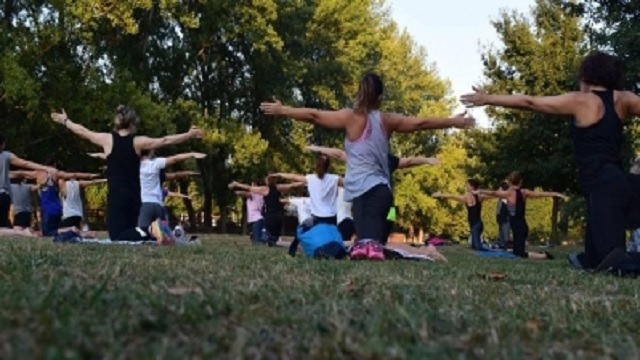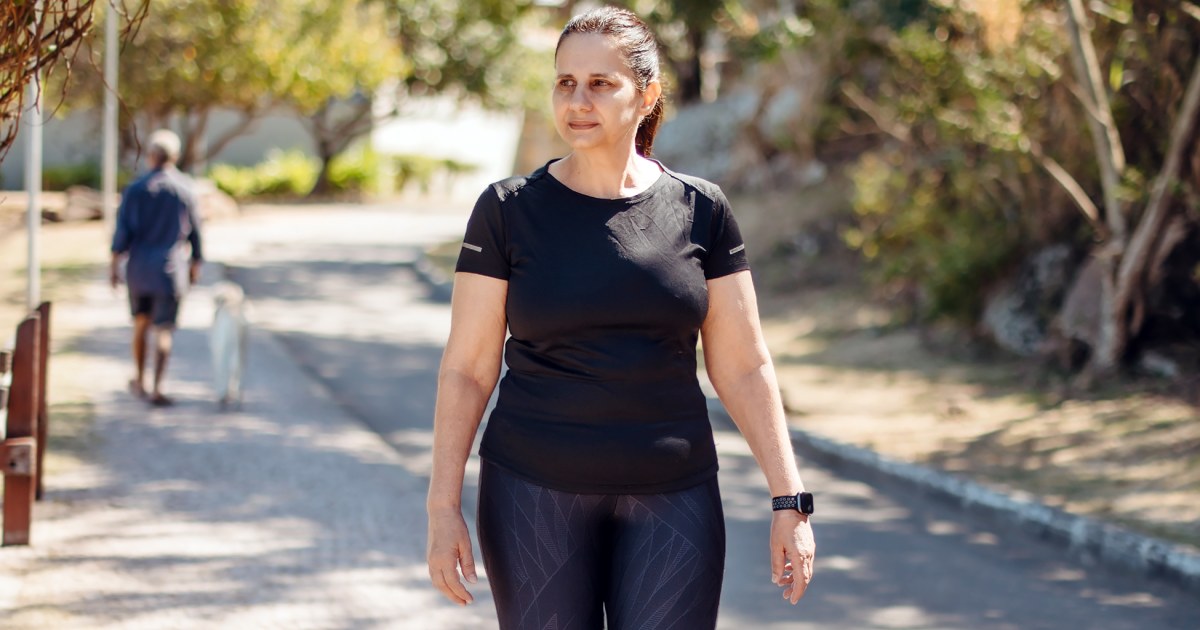Woods NF, Most A, Dery GK. Towards a construction of perimenstrual distress. Health Nurses Res. 1982;5:123–36.
Google Scholar
Fernandez H, Barea A, Chanavaz-Lacheray I. Prevalence, intensity, impact on quality of life and overview of dysmenorrhea in French women: a cross-sectional web survey. J Gynecol Obstet Hum Reprod. 2020. https://doi.org/10.1016/j.jogoh.2020.101889.
Google Scholar
Vlachou E, Owens DA, Lavdaniti M, Kalemikerakis J, Evagelou E, Margari N, Fasoi G, Evangelidou E, Govina O, Tsartsalis AN. Prevalence, well-being and symptoms of dysmenorrhea among university nursing students in Greece. Diseases. 2019. https://doi.org/10.3390/diseases7010005.
Google Scholar
Bilir E, Yıldız Ş, Yakın K, Ata B. The impact of dysmenorrhea and premenstrual syndrome on students’ academic performance and willingness to seek help. Turk J Obstet Gynecol. 2020;17:196–201.
Google Scholar
Wong CL. Health-related quality of life in Chinese adolescent girls with dysmenorrhea. Reprod Health. 2018;15:1–10.
Google Scholar
Tanaka E, Momoeda M, Osuga Y, Rossi B, Nomoto K, Hayakawa M, Kokubo K, Wang EC. Burden of menstrual symptoms in Japanese women – an analysis of medical care-seeking behavior from a survey-based study. Int J Women’s Health. 2014;6:11–23.
Google Scholar
Konno M, Yatsushiro R, Lee S. A study of the image and self-care of menstruation by university students in Japan and Korea. Jpn J Maternal Health. 2009;49(4):628–36.
Google Scholar
Oladosu FA, Tu FF, Hellman KM. Resistance to nonsteroidal anti-inflammatory drugs in dysmenorrhea: epidemiology, causes and treatment. Am J Obstet Gynecol. 2018;218:390–400.
Google Scholar
Hu Z, Tang L, Chen L, Kaminga AC, Xu H. Prevalence and risk factors associated with primary dysmenorrhea among female Chinese university students: a cross-sectional study. J Pediatr Adolesc Gynecol. 2020;33:15–22.
Google Scholar
Fernández-Martínez E, Fernández-Villa T, Amezcua-Prieto C, Suárez-Varela MM, Mateos-Campos R, Ayán-Pérez C, Molina de la Torre AJ, Ortíz-Moncada R, Almaraz A, Blázquez Abellán G, Delgado- Rodríguez M, Alonso-Molero J, Martínez-Ruíz V, Llopis-Morales A, Valero Juan LF, Cancela Carral JM, Martín-Peláez S, Alguacil J. Menstrual problems and lifestyle among Spanish university women. Int J Environ Res Public Health. 2020. https://doi.org/10.3390/ijerph17207425.
Google Scholar
Geneen LJ, Moore RA, Clarke C, Martin D, Colvin LA, Smith BH. Physical activity and exercise for chronic pain in adults: an overview of the Cochrane reviews. Cochrane Database System Rev. 2017. https://doi.org/10.1002/14651858.CD011279.pub3.
Google Scholar
Baton C, Jaeger H, Witzleb E. Measurements of volume changes and venous pressure in the human lower leg during walking and running. J Appl Physiol. 1992;72:2063–8.
Google Scholar
Matthewman G, Lee A, Kaur JG, Daley AJ. Physical activity for primary dysmenorrhea: systematic review and meta-analysis of randomized controlled trials. Am J Obstet Gynecol. 2018;219:255.e1-255.e20.
Google Scholar
Saeed SA, Cunningham K, Bloch RM. Depression and anxiety disorders: benefits of exercise, yoga and meditation. Am Fam Physician. 2019;99:620–7.
Google Scholar
Iwata N, Buka S. Race/ethnicity and depressive symptoms: a cross-cultural/ethnic comparison among college students from East Asia, North and South America. Soc SciMed. 2002;55:2243–52.
Google Scholar
Chou H, Saito S, Kishida Y. Comparison between Japanese and Taiwanese adolescent girls on menstrual education and their actions taken to cope with incidental symptoms of menstruation. Jpn J Maternal Health. 2012;53:358–66 ((in Japanese)).
Google Scholar
Uesugi Y, Naito Y. Young women’s musculoskeletal syndrome news – relationship between musculoskeletal syndrome risk test, dietary lifestyle, and physical activity. Jpn J Health Promo. 2019;21:1–9 ((in Japanese)).
Google Scholar
Uesugi Y, Kanaya S, Nakanishi H, Naito Y. The relationship between locomotor syndrome risk, gait pattern, and standing posture in young Japanese women: a cross-sectional study. Health (Basel). 2020. https://doi.org/10.3390/healthcare8040565.
Google Scholar
Eysenbach G. Improving the Quality of Online Surveys: The Checklist for Reporting Online Survey Results on the Internet (CHERRIES). J Med Internet Res. 2004;6:e34.
Google Scholar
Ministry of Health, Labor and Welfare. Exercise and Physical Activity Benchmark for Health Promotion 2013. Tokyo: National Institute of Health and Nutrition; 2013. p. 13 ((in Japanese)).
Google Scholar
Belloc NB, Breslow L. Relationship between physical health status and health practices. Prev Med. 1972;1:409–21.
Google Scholar
Tenjin K, Sekine M, Yamada M, Tatsuse T. Relationship between parents’ lifestyle and children’s eating habits: a cross-sectional study. J Epidemiol. 2020;30:253–9.
Google Scholar
Lee PH, Macfarlane DJ, Lam TH, Stewart SM. Validity of the International Physical Activity Questionnaire Short Form (IPAQ-SF): A Systematic Review. Int J Behav Nutr Phys Act. 2011;8:115.
Google Scholar
Arundell L, Parker K, Timperio A, Salmon J, Veitch J. Home screen time behaviors among young people and their parents: family typologies and their modifiable correlates. BMC Public Health. 2020. https://doi.org/10.1186/s12889-020-09581-w.
Google Scholar
Maugeri G, Castrogiovanni P, Battaglia G, Pippi R, D’Agata V, Palma A, Di Rosa M, Musumeci G. The impact of physical activity on psychological health during the Covid-19 pandemic in Italy. Heliyon. 2020;6:e04315.
Google Scholar
Moos HR. Development of a questionnaire on menstrual distress. Psychosome Med. 1968;30:853–67.
Google Scholar
Goto Y, Okuda H. Perimenstrual symptoms and their management – assessment with menstrual distress questionnaire. Bull Fac Health Sci Okayama Univ Med Sch. 2015;16:21–30 ((in Japanese)).
Google Scholar
Van Voorhis CW, Morgan BL. Understand power and rules of thumb for determining sample sizes. Tutor Methods Quant Psychol. 2007;3:43–50.
Google Scholar
Gudipally PR, Sharma GK (2021) Premenstrual syndrome. In: StatPearls [Internet]
Kraemer RR, Heleniak RJ, Tryniecki JL, Kraemer GR, Okazaki NJ, Castracane VD. Follicular and luteal phase hormonal responses to low-volume resistance exercise. Medical-scientific sports exercise. 1995;27:809–17.
Google Scholar
Itaki C, Moriya K, Oda S, Takeda H. Comfortable self-paced exercise causes increased blood estradiol concentration and improved emotions in young women during the luteal phase. J Exerc Sports Physiol. 2006;13:19–28 ((in Japanese)).
Google Scholar
Chakravorty SG, Halbreich U. The influence of estrogen on monoamine oxidase activity. Psychopharmacol Bull. 1997;33:229–33.
Google Scholar
Rocha BA, Fleischer R, Schaeffer JM, Rohrer SP, Hickey GJ. 17 The antidepressant-like effect induced by beta-estradiol in the forced swim test is absent in estrogen receptor-beta knockout (BERKO) mice. Psychopharmacology. 2005;179:637–43.
Google Scholar
Yang HJ, Koh E, Kang Y. Women’s susceptibility to cardiovascular disease and the preventive potential of mind-body intervention through changes in neural circuitry and cardiovascular physiology. Biomolecules. 2021;11:708.
Google Scholar
Caplin A, Chen FS, Beauchamp MR, Puterman E. The effects of exercise intensity on cortisol response to subsequent acute psychosocial stressor. Psychoneuroendocrinology. 2021;131:105336.
Google Scholar
Gil-Beltrán E, Meneghel I, Llorens S, Salanova M. Be vigorous with physical exercise and improve your well-being at work! Int J Environ Res Public Health. 2020. https://doi.org/10.3390/ijerph17176384.
Google Scholar
Kaushal N, Keith N, Aguiñaga S, Hagger MS. Social cognition and socioecological predictors of home physical activity intentions, planning, and habits during the COVID-19 pandemic. Behav Sci (Basel). 2020. https://doi.org/10.3390/bs10090133.
Google Scholar
Wang L, Guo X, Wu T, Lv L, Zhang Z. Short-term effects of social encouragement on physical behavior: insights from the Chinese Wanbu network. Public health. 2017;148:25–9.
Google Scholar
Tuson KM, Sinyor D, Pelletier LG. Acute exercise and positive affect: an investigation of the psychological processes leading to affective change. Int J Sport Psychol. 1995;26:138–59.
Google Scholar
Ministry of Health, Labor and Welfare (2019) National Health and Nutrition Survey, p 25. https://www.mhlw.go.jp/stf/seisakunitsuite/bunya/kenkou_iryou/kenkou/eiyou/r1-houkoku_00002.html (in Japanese). Accessed August 30, 2021
Choi BC, Pak AW. A catalog of biases in questionnaires. Prev Chronicle Dis. 2005;2:A13.
Google Scholar
 AD Roberts
AD Roberts



